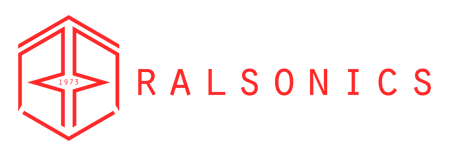04 Apr Ultrasonic Cleaning for Maintenance
Reading Time: < 1 minutes
Maintenance of industrial equipment is an ongoing business, and manufacturers invest millions in the proper cleaning and upkeep of assets. Industrial cleaning techniques include polishing, scrubbing, brushing, spray cleaning, chemical cleaning, compressed air cleaning, etc. Among these, ultrasonic cleaning is one of the safest and most effective methods.
Let’s discuss what ultrasonic cleaning is and how it has found diverse applications in industrial cleaning and maintenance.
Ultrasonic cleaning is a process that utilises high-frequency sound waves between 20-40 kHz to clean any substance. The object that is to be cleaned is placed in a sound-conducting solvent and subjected to sound waves at alternating high and low frequencies. This results in the formation of bubbles or cavities within the solvent, which helps clean the surface they come into contact with. This formation of cavities, also known as cavitation, can clean off:
Ultrasonic cleaners can be used as industrial cleaning equipment for small and large-scale cleaning operations. Several equipment components can be inaccessible during operations and upkeep, which is why manually cleaning using any other method might not be feasible or effective. However, such machines can be easily cleaned and maintained with an ultrasonic cleaner. This also helps increase their longevity.
Ultrasonic cleaners can be designed to handle large-scale cleaning operations with a capacity of up to 100000 litres and small-scale cleaning needs with tabletop setups with as little capacity as 0.5 litres. The cleaning process can be conducted in a vacuum or an immersed environment with cleaning bricks. Custom ultrasonic cleaning machines can also be created for repeated applications such as filter cleaning or tube degreasing.
An ultrasonic cleaner must offer the following features to ensure end-to-end equipment cleaning and maintenance with minimal risk of damage:
Like any other industrial cleaning equipment, ultrasonic cleaners should also be scalable for larger volumes. Further, multi-frequency ultrasonic versatility is also necessary to handle different types of contamination and maintenance needs across various industries. Ralsonics offer the best-in-class ultrasonic cleaning services. Advanced ultrasonic cleaners are available for diverse applications in aerospace, automobile, cement, food and beverages, pharmaceuticals, oil and gas, chemicals, and other industries. To learn more about how we can help you, contact us today!
What is Ultrasonic Cleaning?
Ultrasonic cleaning is a process that utilises high-frequency sound waves between 20-40 kHz to clean any substance. The object that is to be cleaned is placed in a sound-conducting solvent and subjected to sound waves at alternating high and low frequencies. This results in the formation of bubbles or cavities within the solvent, which helps clean the surface they come into contact with. This formation of cavities, also known as cavitation, can clean off:
- Trapped dirt
- Debris and particulates
- Mineral deposits
- Plastic leftovers
- Colourants
- Organic build-up (such as wax, proteins, etc.)
- Grease and oil residues
Ultrasonic Cleaners as Industrial Cleaning Equipment
Ultrasonic cleaners can be used as industrial cleaning equipment for small and large-scale cleaning operations. Several equipment components can be inaccessible during operations and upkeep, which is why manually cleaning using any other method might not be feasible or effective. However, such machines can be easily cleaned and maintained with an ultrasonic cleaner. This also helps increase their longevity.
Ultrasonic cleaners can be designed to handle large-scale cleaning operations with a capacity of up to 100000 litres and small-scale cleaning needs with tabletop setups with as little capacity as 0.5 litres. The cleaning process can be conducted in a vacuum or an immersed environment with cleaning bricks. Custom ultrasonic cleaning machines can also be created for repeated applications such as filter cleaning or tube degreasing.
Features of Ultrasonic Cleaners
An ultrasonic cleaner must offer the following features to ensure end-to-end equipment cleaning and maintenance with minimal risk of damage:
- Cavitation-resistant, stainless-steel tanks that can endure multiple cleaning sessions over a long period of usage.
- Digital temperature control functionality to set and control the temperature of the cleaning process during a maintenance event.
- Digital timer functionality to manage cleaning process duration and avoid over-exposure to ultrasonic waves for sensitive equipment or components.
- Pump filtration modules to continuously remove debris, particles, or other contaminants from the cleaning system
Like any other industrial cleaning equipment, ultrasonic cleaners should also be scalable for larger volumes. Further, multi-frequency ultrasonic versatility is also necessary to handle different types of contamination and maintenance needs across various industries. Ralsonics offer the best-in-class ultrasonic cleaning services. Advanced ultrasonic cleaners are available for diverse applications in aerospace, automobile, cement, food and beverages, pharmaceuticals, oil and gas, chemicals, and other industries. To learn more about how we can help you, contact us today!



No Comments